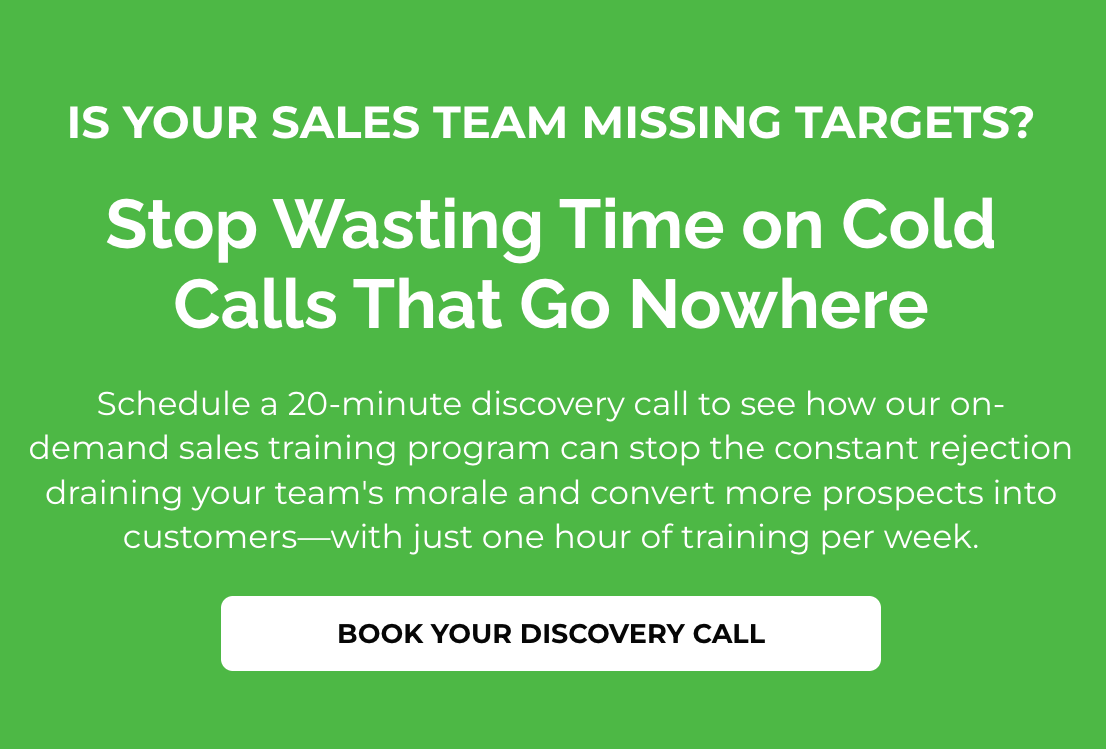Prospecting Voicemail Messages

“How Often Should You Leave Voicemails for Prospects? Once a week, every 3 days, etc.?”
This is a popular question I know I’ve answered before, but in case you missed it, I have a simple rule to follow concerning the number of voicemail messages I leave, and that is:
I don’t chase prospects that don’t want to be caught.
Therefore, I have a three-strikes you’re out rule to where after the third message with no callback, they are removed from my list of calls to make.
BEFORE YOU FREAK OUT…
Couple things to keep in mind:
I have a first, second, and third predefined voicemail message. I know all three of my voicemail messages are spot on to pique interest and get a callback from my targeted audience, therefore I know that if after 3 attempts, if they haven’t called back, it will be because of one of three things:
- Timing isn’t right for them;
- They aren’t qualified or
- They aren’t interested in solving the problems I solve.
No matter which one, it makes no sense to waste time and bog down my pipeline with low % prospects. It’s time to move on. Here’s how.
Enter: Drip Email Marketing
Utilize a drip marketing campaign.
An example would be a weekly newsletter that solves problems your target audience has.
When you have a drip email marketing campaign take over, they are still being “touched” with information that will allow them to determine if you are a trusted advisor or not for specific problems they face.
So when a trigger event happens on their side (like their sales team misses quota again or their turnover costs are skyrocketing, and they want a better solution to get new inside sales reps to produce better, faster), they remember and reach out to me, creating a warm lead (a hand raiser)
Not “WHEN” But “WHAT”
With that said, the original question was, “How often are you leaving voicemails for prospects? Once a week, every 3 days, etc.?”
The one thing to keep in mind is this… It won’t matter “when” or “how often” if the message you leave isn’t piquing their interest.
It needs to have a WHAT’S IN IT FOR THEM clear picture for them to want to stop what they are doing and call you back.
So it might not be the “timing” or “frequency” of your calls that are the problem, it’s most likely the message that needs to be fixed.
But to answer the question of “how often” will depend on the lead temperature.
If I have an inbound (warm) lead, I may use the following:
Day 1: Call, Voicemail, Email (Morning)
Day 1: Call (Afternoon)
Day 1: Call, Voicemail (End of day)
Day 2: Call (Morning)
Day 2: Email (Afternoon)
Day 2: Call (End of Day)
Day 3: Call, Voicemail, Email (Afternoon)
I am more aggressive on a warm inbound lead because you want to strike while the iron is hot. And if the prospect is a warm lead, chances are they have also reached out to my competitors. I want to make sure I get in on that conversation before making a purchasing decision elsewhere or cool off.
If it’s an outbound (cold) lead:
Day 1: Call, Voicemail, Email (Morning)
Day 1: Call (Afternoon)
Day 1: Call (End of day)
Day 2: Email (Afternoon)
Day 2: Call (End of Day)
Day 3: Call, Voicemail, Email (Afternoon)
The prospect has received your messages at this point. If they haven’t responded, you have two choices.
Dump Or Chase
The CHASE OPTION:
If the prospect is worth chasing, there is nothing wrong with adding a bi-monthly or monthly (every 30-days) “Call, Voicemail, Email.”
Building a prospecting list of targeted accounts and then calling every 30-days is a staple of inside sales best practices.
“Are there sales tool that can help manage these customized cadences or sequences for my team?”
Yes. Lot’s of them. Yesware is a simple one to use, and for more robust options, you can look at VanillaSoft and Outreach, just to name a few.
– Michael Pedone
Michael Pedone teaches inside sales teams how to pick up the phone and close business. He is the CEO/FOUNDER of SalesBuzz.com – An online sales training company.

